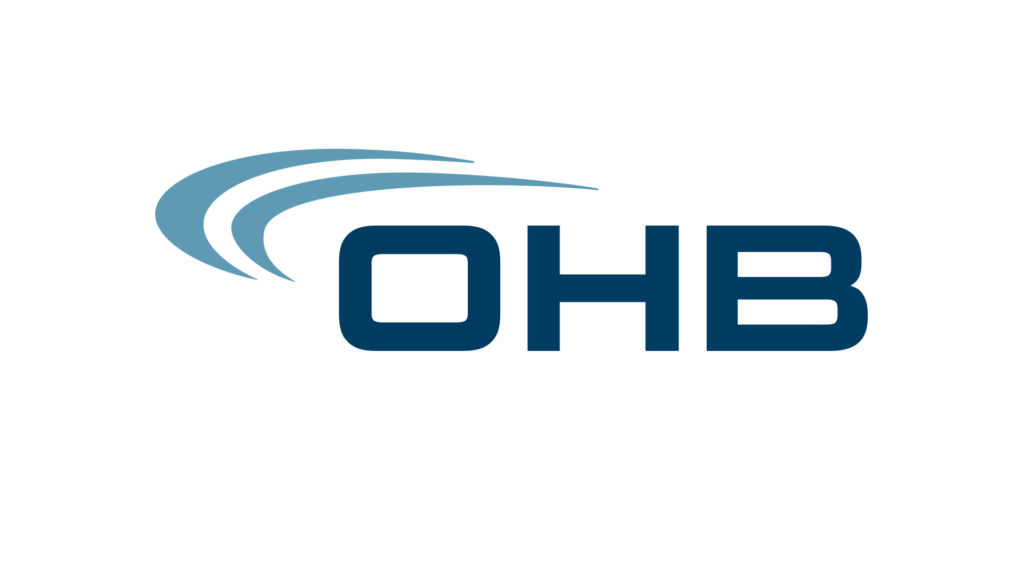If you’ve ever walked into a room full of strangers, clutching a name tag and rehearsing your elevator pitch, you know the discomfort of forced networking events. These gatherings are meant to spark professional connections, but often leave attendees feeling awkward, isolated, or drained—especially in today’s hybrid and remote work environments. Yet, the desire for genuine workplace relationships remains as strong as ever. So, why do forced networking events so often fall flat, and how can new approaches—like Neroia’s AI-powered micro-events—help us move from awkward mingling to authentic connection?
Let’s explore why forced networking events rarely deliver, and how the future of workplace culture is being reshaped around personalization, small groups, and organic engagement.
Understanding the Psychology Behind Forced Networking Events
The introvert's dilemma
For introverts and even many extroverts, forced networking events can feel like a test of social stamina. The pressure to approach strangers, make small talk, and “sell yourself” can be overwhelming. According to research highlighted by ScienceDaily, people who are naturally slower to warm up in social settings may find these events especially stressful. The artificial setting only heightens anxiety, making it harder to relax and be oneself.
The discomfort isn’t just personal. It’s structural. Forced networking events often ignore the diversity of social comfort levels, lumping everyone into the same high-pressure environment.
The role of social scripts and expectations
These events come with unwritten rules: exchange business cards, deliver a polished pitch, and collect as many contacts as possible. But as many professionals have observed, these scripts can feel transactional and insincere.
"At its core, networking is about building relationships, cultivating connections, and fostering mutual support. Yet, too often, networking events devolve into a frantic game of self-promotion and opportunism, where authenticity takes a back seat to self-interest."
The expectation to perform can lead to shallow conversations and missed opportunities for real connection. Instead of fostering camaraderie, forced networking events often reinforce silos and surface-level interactions.
Is the Pain Worth It? Real Benefits Hidden Behind the Awkwardness

Stats that prove networking still matters
Despite their flaws, networking opportunities do matter. According to LinkedIn, 85% of jobs are filled through networking. Meaningful professional relationships can open doors to new roles, collaborations, and personal growth. But the real value comes not from the number of business cards exchanged, but from the quality of the connections made.
The challenge is that traditional, forced networking events rarely create the environment needed for these deeper bonds to form—especially in hybrid or remote workplaces, where physical presence is limited and organic interactions are rare.
From chance meeting to career leap: micro case study
Consider the story of Maya, a marketing analyst who reluctantly attended a company-wide virtual networking session. The breakout room format paired her with three colleagues she had never met. Instead of sticking to job titles, they discussed their favorite podcasts and weekend hobbies. Weeks later, one of those colleagues remembered Maya’s interest in data storytelling and recommended her for a cross-functional project. That single, authentic conversation led to a career-defining opportunity.
This is the hidden promise of networking: when interactions are genuine, even brief encounters can spark long-term benefits.
Pre-Event Prep: How to Walk In Confident Instead of Cringing
Researching attendees and agenda
Preparation can transform dread into confidence. Before attending forced networking events, review the attendee list if available. Look for shared interests, mutual connections, or recent projects. A little research goes a long way in making your conversations more meaningful.
If the agenda is published, identify sessions or speakers that resonate with your goals. Planning ahead allows you to enter the event with purpose, not just hope.
Setting easy, measurable goals
Set achievable targets for yourself:
- Connect with three new people.
- Ask one speaker a thoughtful question.
- Stay for at least an hour before deciding whether to leave.
These simple, measurable goals shift the focus from “working the room” to making quality interactions. By lowering the stakes, you reduce anxiety and increase your chances of enjoying the experience.
Icebreakers That Don’t Feel Fake: Conversation Starters Anyone Can Use
Open-ended questions that invite stories
Forget the canned elevator pitch. The best conversations begin with curiosity. Try these open-ended questions:
- “What brought you to this event?”
- “What’s the most interesting thing you’ve learned lately?”
- “How did you get started in your field?”
- “What’s a challenge you’re working on right now?”
These prompts invite stories, not sales pitches, and help people open up about their passions and experiences.
Listening techniques that keep talk rolling
Active listening is the secret ingredient for memorable networking. Here’s how to do it:
- Maintain eye contact and nod to show you’re engaged.
- Paraphrase what you’ve heard: “So you’re working on a new product launch—how’s that going?”
- Ask follow-up questions based on their responses.
“Truly listening to others is essential for building meaningful relationships. Practice active listening by giving your full attention, maintaining eye contact, and asking thoughtful questions to show that you value their perspective.”
By focusing on the other person, you create a positive impression and lay the groundwork for a genuine connection.
Live Event Hacks: Navigating the Room Without Working the Room
Leveraging roles like volunteering or hosting
One of the best ways to ease into forced networking events is to take on a role. Volunteering to help at the registration desk, introducing a speaker, or assisting with logistics gives you a natural reason to interact with others. People will approach you, sparing you the discomfort of breaking into groups.
This approach works just as well in virtual settings—moderating a chat, coordinating breakout groups, or facilitating Q&A sessions.
Finding low-pressure “third places” inside the venue
Every event has its quieter corners: coffee stations, side tables, or breakout rooms. These “third places” offer a more relaxed atmosphere for conversation. Seek out these spots for small-group or one-on-one chats, where the pressure to perform is lower and authenticity comes more naturally.
If you’re attending remotely, look for virtual lounges or informal chat rooms where structured agendas give way to organic interaction.
Alternatives to Forced Networking Events for Genuine Connection
Digital “coffee chats” and micro-meetups
The rise of hybrid and remote work has shown that meaningful connections don’t require large, formal gatherings. Digital coffee chats—short, informal video calls with one or two colleagues—are gaining popularity. Micro-meetups, whether online or in person, bring together small groups around shared interests, making conversation easier and more personal.
Platforms like Neroia are leading this shift by using AI to curate micro-events—such as yoga sessions, cycling meetups, or cultural exchanges—tailored to employees’ interests and schedules. These experiences break down barriers and foster authentic bonds, one small group at a time.
Building community through shared projects
Another powerful alternative is to connect through collaborative projects. Working together on a cause, a wellness challenge, or a book club creates natural opportunities for interaction and trust-building. These shared experiences are more likely to result in lasting relationships than the fleeting contacts made at forced networking events.
After the Name Tags Come Off: Following Up Without Feeling Salesy
Crafting the perfect 60-second follow-up message
The real magic happens after the event. A thoughtful, concise follow-up can turn a brief encounter into a lasting connection. Here’s a simple template:
“Hi \[Name\], I enjoyed our conversation about \[topic\] at \[event\]. I’d love to stay in touch and hear more about your work in \[area\]. If you’re open to it, perhaps we can grab a virtual coffee sometime?”
This message is personal, specific, and low-pressure—everything a good follow-up should be.
Maintaining relationships over the long haul
Building a network is about consistency, not intensity. Stay connected by:
- Sending occasional updates or articles related to shared interests.
- Congratulating contacts on their achievements or milestones.
- Inviting them to small-group activities or micro-events.
Over time, these small gestures add up, transforming acquaintances into trusted colleagues and friends.
Why Forced Networking Events Fail in Hybrid Workplaces—and How Neroia is Changing the Game
Forced networking events struggle to deliver meaningful results in hybrid and remote environments. Here’s why:
These limitations are why so many employees dread forced networking events and why engagement often fizzles after the name tags come off.
Neroia, however, is rewriting the script. By leveraging artificial intelligence, Neroia’s platform effortlessly discovers shared interests among employees and recommends small-group activities—think yoga sessions, company runs, or cultural exchanges. These AI-driven micro-events are tailored to individual preferences and schedules, making participation feel natural, not forced.
A recent OHB pilot, for example, saw employees connect through yoga and company runs, coordinated seamlessly by Neroia’s AI chat. The platform uses anonymized analytics to ensure privacy while providing HR with valuable insights into engagement trends—without compromising trust.
“Neroia’s approach is all about employee-centricity: breaking down silos, cultivating vibrant connections, and moving beyond awkward, mandatory gatherings to foster genuine camaraderie and well-being.”
This is not just a trend—it’s the future of workplace culture. In 2025, employees expect engagement to be employee-driven, accessible across hybrid teams, and focused on small-group bonding. Neroia meets these expectations by integrating with existing programs and external resources, creating a flexible, closed community where everyone can thrive.
Why Neroia’s Micro-Events Work
- Activities are tailored to real interests and schedules, boosting participation.
- Small groups (3-4 people) foster authentic conversation and trust.
- AI chat orchestrates logistics, removing planning friction.
- Anonymized data ensures privacy and employee comfort.
- Integrates with existing workplace initiatives for seamless adoption.
How to Move Beyond Forced Networking
- Recognize the limitations of traditional, forced networking events.
- Shift the focus from large, formal gatherings to personalized, small-group interactions.
- Leverage AI-driven platforms like Neroia to curate micro-events around shared interests.
- Encourage ongoing, informal engagement through digital coffee chats and collaborative projects.
- Measure success not by quantity of contacts, but by quality of relationships and improved well-being.
2025 Trends Shaping Workplace Connection
- Employee-driven engagement replaces top-down mandates.
- Hybrid accessibility ensures everyone can participate, regardless of location.
- Micro-events and small-group bonding become the norm.
- AI and anonymized analytics support personalization and privacy.
- Focus shifts from event attendance to authentic, ongoing connection.
The Future: From Forced Networking to Flourishing Workplace Culture
Forced networking events may have been a necessary evil in the past, but today’s employees want more: authentic, organic relationships that enhance well-being, collaboration, and productivity. Neroia’s AI-powered platform is leading the way, replacing awkward, mandatory gatherings with personalized micro-events that bring people together naturally—whether they’re in the office or working remotely.
As hybrid work continues to evolve, the companies that thrive will be those that prioritize real connection, break down silos, and foster vibrant communities. Neroia is committed to this vision—helping organizations move beyond forced networking events and into a future where workplace culture is defined by genuine, employee-driven engagement.
Ready to leave awkward mingling behind? With Neroia, authentic connections are just a micro-event away.




